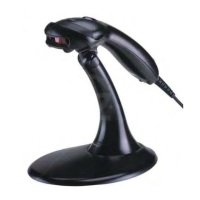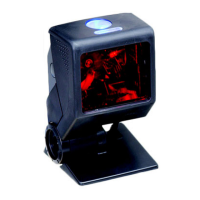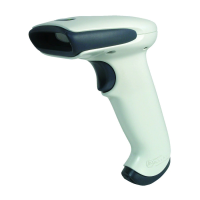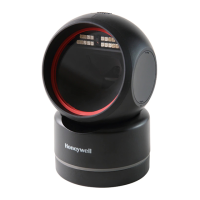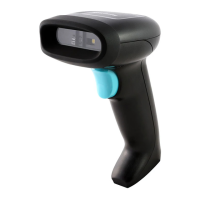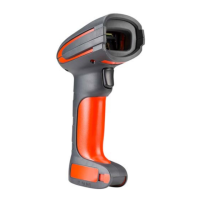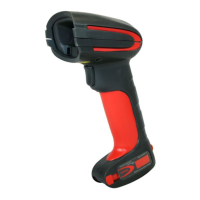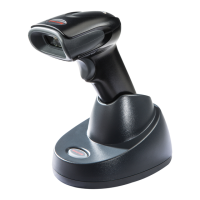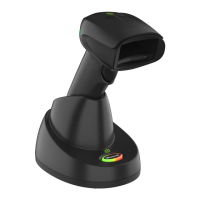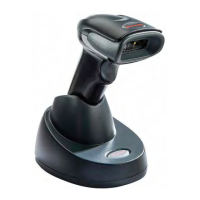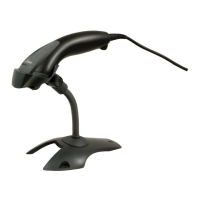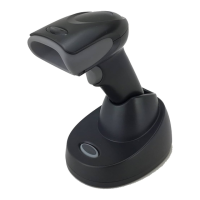5–4
The following example demonstrates how to configure the User-Defined ISBT
identifiers:
Assume the left-hand identifiers are the ISBT defined donation
identification number: “=G”; and the right hand identifiers are country
specific identifiers “&a”.
1. Scan the ENTER/EXIT configuration mode bar code.
2. Scan the 1
st
Left Identifier configuration mode bar code.
3. Scan (Code Byte 0) + (Code Byte 6) + (Code Byte 1).
4. Scan the 2
nd
Left Identifier configuration mode bar code.
5. Scan (Code Byte 0) + (Code Byte 7) + (Code Byte 1).
6. Scan the 1
st
Right Identifier configuration mode bar code.
7. Scan (Code Byte 0) + (Code Byte 3) + (Code Byte 8).
8. Scan the 2
nd
Right Identifier configuration mode bar code.
9. Scan (Code Byte 0) + (Code Byte 9) + (Code Byte 7).
10. Scan the Enable User-Defined Sequence bar Code.
11. Scan the Enable ISBT bar code.
12. Scan the ENTER/EXIT configuration mode bar code.
The scanner is now configured with the appropriate identifiers. Since both
ISBT and User-defined Concatenation are enabled, ISBT 128 bar codes
scanned successively that contain these identifiers will be concatenated.
An alternate method of the type found in section 4.8.1 of the ISBT
specifications can be used for configuring user-defined concatenation
sequences. Using the previous example, the identifiers can be configured into
a single configuration mode bar code. The following bar codes can be used to
enable and disable the user-defined concatenation.
Enable (Left, =G) + (Right, &a)
Disable (Left, =G) + (Right, &a)
Note: These configuration bar codes require Single-Code configuration mode.
These bar codes are not recognized in Multi-Code configuration mode.
Two forms of concatenation can be enabled at any given time, one pre-defined
sequence and the user-defined sequence. Code selects and ISBT Code-128
concatenation cannot be used simultaneously. Both functions use the same
internal resources so they must remain mutually exclusive.
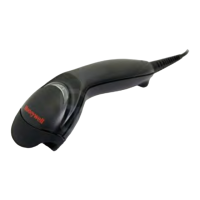
